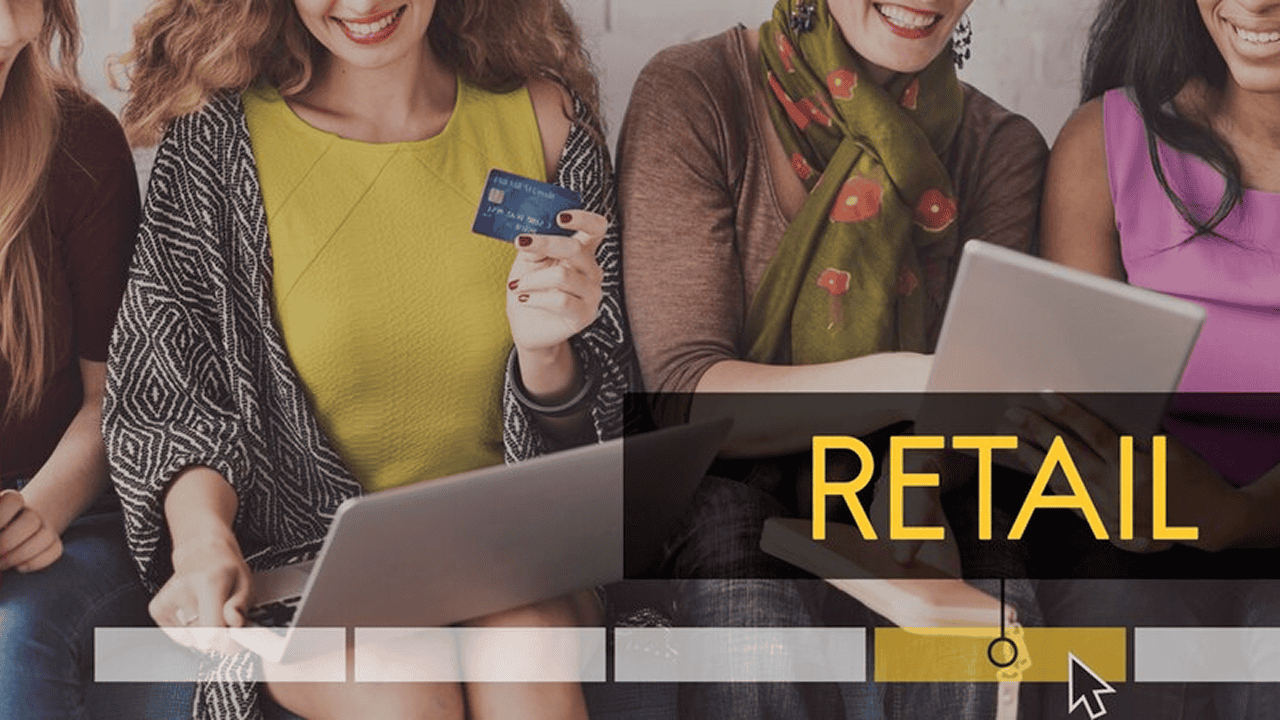
Top Retail Trends in 2025: How Stores Are Changing Fast
The retail world is changing quickly in 2025. From new technology to new customer habits, businesses are finding fresh ways to grow. Whether you run a small shop or manage a big store, knowing the latest trends can help you stay ahead. This blog will explain the top retail trends in simple English so that everyone can understand and use them.
1. Online and Offline Shopping Are Merging
In 2025, people love both shopping online and in physical stores. Retailers now use something called “omnichannel” – a system that connects online and in-store shopping. It gives customers a smooth shopping experience, no matter how they shop.
What this looks like:
- You check a product online and pick it up at a local store.
- A store shows you discounts based on what you looked at online.
- You return online purchases in physical stores.
Big brands like Target and Walmart use this system to serve customers better. Even small businesses are using simple tools like Shopify and Square to connect their sales channels.
2. AI Is Helping Stores Serve Customers Better
Artificial Intelligence (AI) is becoming a big helper in retail. From chatbots to smart inventory systems, AI makes shopping faster and smarter.
AI helps with:
- Chatbots that answer customer questions 24/7.
- Product suggestions based on past shopping.
- Smart stock control so stores don’t run out of items.
- Personalized ads and emails that feel tailor-made.
Retailers using AI save time, cut costs, and make customers happier.
3. Sustainability Is More Than a Trend – It’s a Must
In 2025, more customers care about the planet. They want to shop with brands that care too. This means eco-friendly products, green packaging, and ethical business practices are now essential.
Ways retailers are becoming greener:
- Using recycled or biodegradable packaging.
- Offering refillable or reusable items.
- Selling locally made or eco-certified products.
- Sharing sustainability stories on websites and labels.
Bonus Tip: Going green can attract loyal customers and even save money over time.
4. Personalized Shopping Is the New Standard
In the past, everyone saw the same ads and products. Now, personalized shopping is a key trend. Stores are using data to understand what each customer likes.
Examples of personalized experiences:
- Emails that greet you by name and suggest your favorite items.
- Discounts based on your buying habits.
- Apps that remember your shoe size or style preference.
When shopping feels personal, people are more likely to buy and return to your store.
5. Social Media Shopping Is Exploding
People are not just browsing Instagram or TikTok for fun – they’re shopping too! Social commerce means you can now buy products directly through social media apps.
Popular platforms for shopping:
- Instagram Shops
- Facebook Marketplace
- TikTok Shop
- Pinterest Shopping Pins
Short videos, influencer promotions, and quick links to buy are making shopping fun and instant.
6. Augmented Reality (AR) Makes Shopping Interactive
Augmented Reality lets customers see how things look in real life – before buying. It’s great for clothes, furniture, glasses, and even makeup.
Examples of AR in retail:
- Try on clothes or shoes virtually.
- See how a sofa looks in your living room.
- Test makeup shades on your face using your phone.
This makes shopping easier and reduces returns.
7. Fast Delivery Is a Priority
In 2025, customers don’t like to wait. Thanks to Amazon Prime, people expect fast shipping from everyone. Even local stores are now offering same-day or next-day delivery.
How stores are keeping up:
- Partnering with delivery services like DoorDash or Uber.
- Using local fulfillment centers.
- Offering “click and collect” or curbside pickup.
Fast delivery isn’t just nice to have – it’s expected.
8. Mobile Shopping Is Still Rising
More than half of online shopping now happens on phones. That’s why retailers are focusing on mobile-first websites and apps.
To win in mobile shopping:
- Your website must load fast on phones.
- Checkout should be simple (no need to type too much).
- Mobile wallets like Apple Pay and Google Pay should be accepted.
A slow mobile site can cost you sales.
9. Subscription Shopping Is Growing
Subscription boxes used to be just for snacks or makeup. Now, everything from clothes to pet food to razors can be delivered monthly.
Why subscriptions are popular:
- They’re convenient – no need to remember to reorder.
- They feel like gifts every month.
- They often come with discounts or special items.
Retailers are using this model to build steady, recurring income.
10. Smart Stores Without Cashiers
Retailers are testing stores without checkouts or cashiers. These “just walk out” stores use sensors and cameras to track what you take. You get billed automatically.
Examples:
- Amazon Go stores – scan your phone, grab items, and walk out.
- Smart vending machines – found in airports, gyms, and hotels.
Though still new, this trend will grow – especially in cities.
11. Loyalty Programs Are More Rewarding
Basic point systems are out. Now, loyalty programs offer real value. People want rewards they can use, not just a random discount.
Best features in loyalty programs:
- Points for every purchase.
- Rewards like free shipping, VIP access, or free gifts.
- Birthday surprises and exclusive sales.
- Mobile app tracking and easy redemption.
Stores that treat repeat buyers like VIPs keep them coming back.
12. Voice Shopping Is Quietly Rising
More people use Alexa, Google Assistant, or Siri to shop. While not the biggest trend yet, voice shopping is growing.
Common voice-shopping actions:
- “Order paper towels.”
- “Add milk to my shopping list.”
- “Find the best deals on headphones.”
Retailers are optimizing product listings for voice search and easy reordering.
13. Live Shopping Events Are Hot
Live shopping events – like a mix of QVC and social media – are getting big. Retailers go live, show products, answer questions, and sell in real time.
Why this works:
- It’s fun and interactive.
- Shoppers can see real use cases.
- Scarcity drives quick buying decisions.
This trend is very strong in beauty, fashion, and electronics.
14. Flexible Payments Are Popular
People want more ways to pay. Buy Now, Pay Later (BNPL) is booming. Services like Afterpay, Klarna, and Affirm let customers pay over time.
Other flexible options:
- Mobile wallets (Apple Pay, Samsung Pay)
- Cryptocurrency in some stores
- One-click payments through saved cards
Easy, flexible payments help reduce cart abandonment.
15. Focus on Local and Small Businesses
Many shoppers are choosing to support local businesses over big chains. They care about helping their community.
How local stores are winning:
- Sharing their story on social media.
- Offering pickup and fast delivery.
- Selling unique, handmade, or local products.
People feel good when they support small stores with heart.
16. Retail Employees Are Becoming Tech Experts
In modern stores, staff are doing more than just stocking shelves. They help with mobile apps, AR experiences, and online orders too.
Training includes:
- Using mobile checkout devices.
- Helping customers with online returns.
- Managing store apps and digital displays.
Stores that invest in employee training improve both service and sales.
17. Data Is the New Fuel
Retailers now collect lots of data – from clicks, purchases, returns, and even how long someone looks at a product.
What data helps with:
- Knowing what to stock and when.
- Offering better prices.
- Running targeted ads.
- Reducing returns by recommending the right items.
Important Note: Stores must handle data with care to protect customer privacy.
18. Retail Tech Events Are Driving Innovation
Big tech events like NRF Retail’s Big Show or Shoptalk bring together smart minds. New retail tech ideas often come from here.
What trends come out of these events:
- New payment tools.
- Smart shelf technology.
- AI product search.
- Store layout design based on data.
Retailers looking to grow are attending or watching these closely.
19. Pop-Up Stores Are a Smart Experiment
Short-term stores in malls, events, or high-traffic spots help test ideas. Pop-up shops are great for:
- Seasonal products (like holiday gifts)
- Testing new cities or customer groups
- Building buzz for new product launches
They’re low-cost and can lead to long-term success.
20. Emotional Marketing Is Working
People buy with emotion, not logic. Brands that tell stories, show values, or make customers feel something tend to grow faster.
Emotional marketing tools:
- Video stories
- Founder messages
- Customer testimonials
- Cause-related marketing (donating to charity, for example)
Shoppers want to connect, not just consume.
Final Thoughts
Retail in 2025 is faster, smarter, and more connected than ever. From AI to AR, from social shopping to sustainability, businesses need to move with the times. The good news? Many tools are easy to use – even for small retailers. The key is to focus on what your customers need and love.
If you adapt to these trends, your retail business can not only survive – it can thrive.
